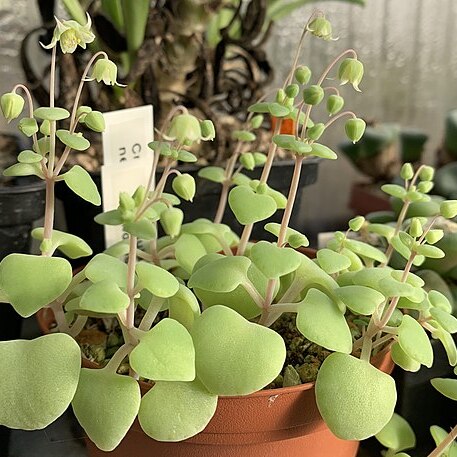Perennial, soft herbaceous, erect or decumbent branches ± 0.04-0.15 m long. Leaves 2 or 3 pairs; lamina broadly ovate, 3-15 x 4-13 mm, rounded, cordate or cuneate, entire, somewhat fleshy, glabrous, grey-green with brown lines; petioles 3-15 mm long. Inflorescence a loose, terminal thyrse, without peduncle. Corolla star-to cup-shaped, scarcely fused at base, pale yellowish green with brown stripes; lobes smooth, 2.0-3.5 mm long, acute to acuminate, slightly keeled, apex recurved. Flowering time June-Aug.
Erect to decumbent, often branched, tuberous geophyte, 10-100 mm tall. Leaves usually in at least 3 pairs, petiolate, broadly ovate to circular, fleshy, 3-15x 4-13 mm, grey-green, with crenate margin. Flowers in a loose, terminal cluster, without a peduncle, star-to cup-shaped, petals 2-3.5 mm long, pale yellow-green.
Erect or sprawling tuberous geophyte, 6-15 cm. Leaves opposite, in 3(4) pairs, thin-textured, usually petiolate, suborbicular-reniform. Flowers in a racemose thyrse, cup-shaped, yellowish green to brown, petals 2.0-3.5 mm long.

